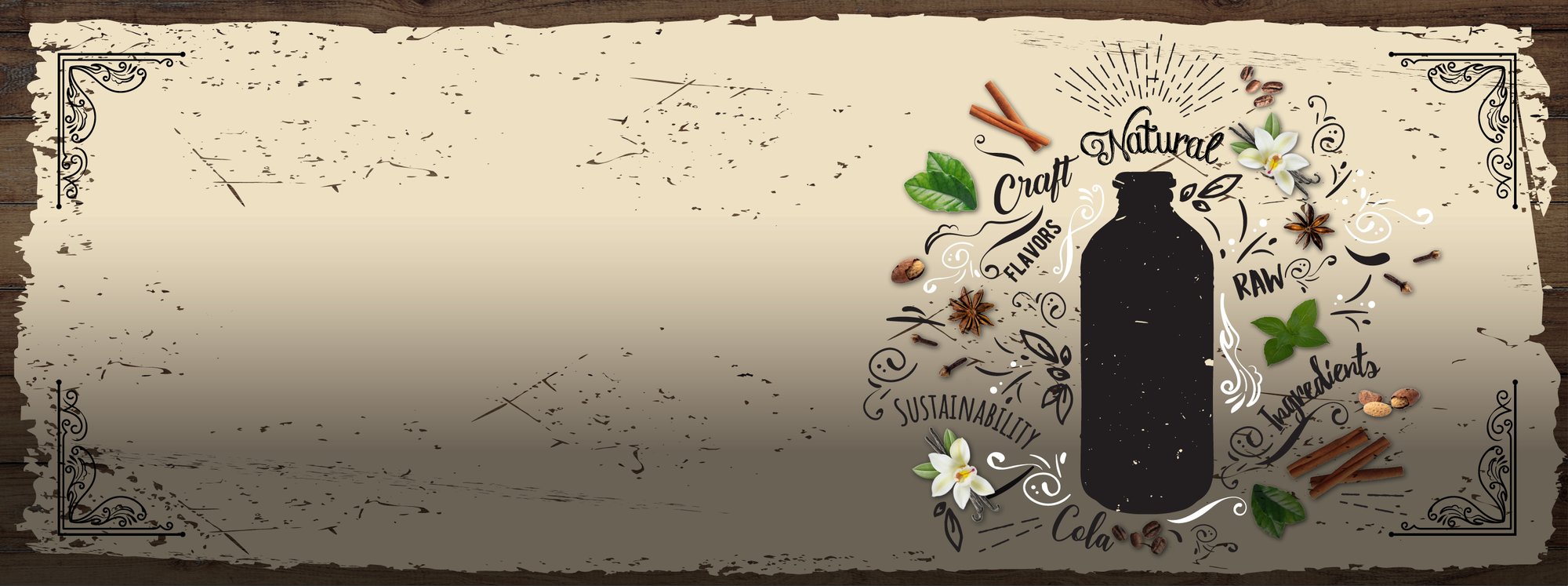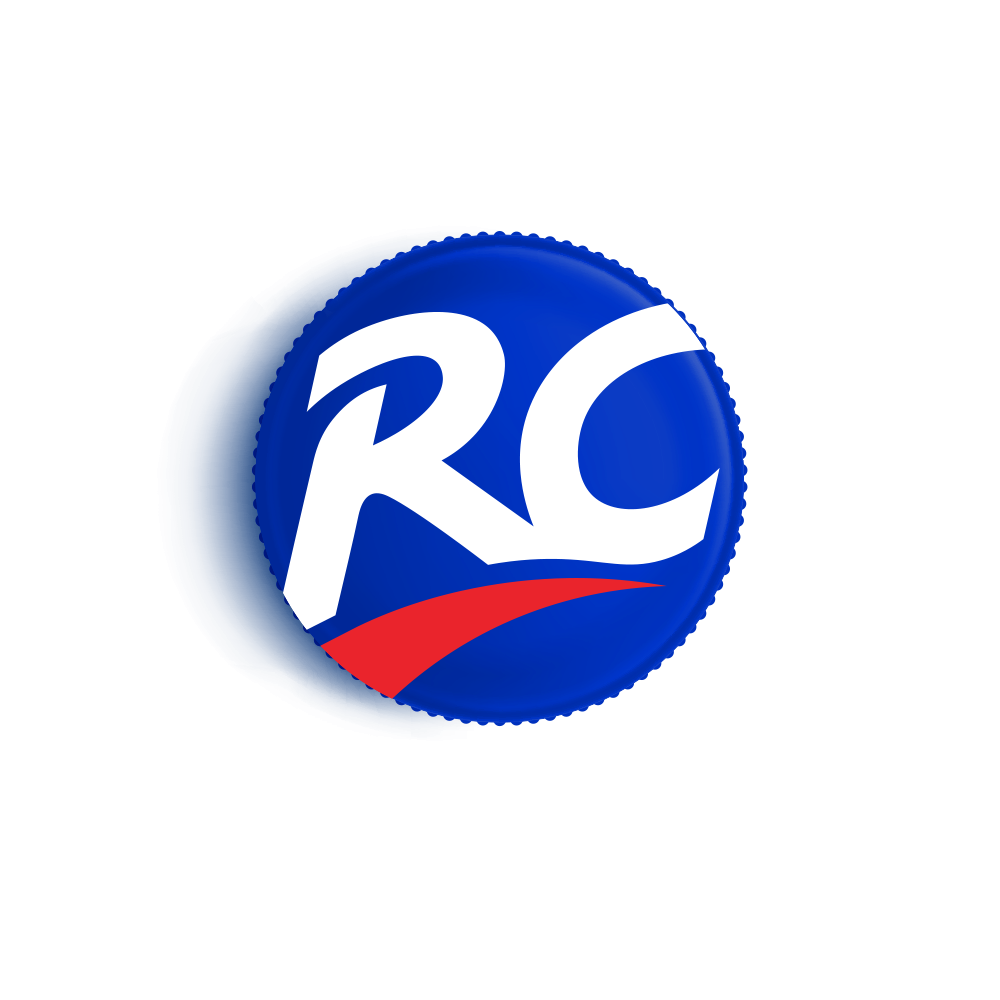An overarching trend among contemporary consumers is a more holistic view of health and wellness that involves supporting mental, physical, and environmental health. And this is determining, to a large extent, the driving forces in the beverage industry.Moreover, we see this “better-for-you” mantra as more than a trend of recent years but rather a societal movement that’s having a significant impact on the beverage industry. So let’s take a look at how we can expect these trends to play out.
The Pull Toward Sustainable Consumption
Yes, consumers are motivated by their own health when making beverage choices. But their decision-making is also driven by how products influence the health of the planet. Consumers’ view of sustainability spans the entire product lifecycle, from suppliers to consumers.
According to National Geographic, there’s an estimated 18 billion pounds of plastic waste that enter the ocean from coastal regions. In the past, the majority of consumers didn't respond. But now, the next generation are demanding responsible packaging from the brands that they interact with and top brands are responding. Today’s consumers are pushing to cut the quantity of daily plastic waste, with the goal both to reduce the quantity of waste and to create more environmentally friendly packaging and bottles. Part of this initiative toward greater sustainability involves the move toward glass instead of plastic for bottling beverages and the adoption of reusable containers like growlers. While another aspect involves using advanced biobased packaging materials for responsible packaging – such as PLA (polylactide) and PHA (a biodegradable material produced in nature), which are derived from natural plant starches.
Download The 8 Hottest Beverage Trends for 2022 eBook
Keep It Clean: Avoiding Artificial Ingredients and Flavorings
The growing interest in avoiding unsustainable farming and manufacturing techniques has also led to stronger demand for clean labels – beverage products that are free of artificial ingredients and synthetic chemicals, and that include fewer ingredients overall.
As pointed out by Restaurant Business, consumer preference for natural ingredients is up by 80 percent in the last three years. But the issue is so much broader than that. The clean food, eco-friendly revolution extends to improving energy efficiency in the product development process, knowing about the treatment and conditions of livestock, and reducing waste and carbon emissions. Brands that are “clean” are using product labels to provide information on how the beverages are made, and to explain how the brand is doing its part to save the environment. Novotaste points out that this includes whether a product is organic, if it holds fair trade certification, and if it relates to the issue of animal welfare.
Using Ingredients that Match Lifestyle & Values
More than ever, consumers are ingredient conscious; viewing mealtime as an opportunity to slow down and take care of themselves. There’s a growing interest in natural and organic ingredients that consumers can feel good about, as well as locally sourced ingredients that match their values. One of the biggest beverage trends is toward plant-based products, which are viewed as healthier and more sustainable than their animal-based counterparts.
Reflecting these new consumer habits and trends, beverage manufacturers are integrating more ingredients into their products that are organic and locally sourced. Furthermore, as pointed out by Prepared Foods, plant-derived ingredients are a fast-growing area that is meeting the burgeoning interest of consumers in health, sustainability, and ethics.
In 2019, a growing group of consumers follow a flexitarian diet; which means they eat mainly plant-based foods but do not cut out meat altogether. This, together with increasing numbers of vegetarians and vegans, has led to growing demand for almond, soy, and coconut-based beverage products, with niche options like peanut, oat, and flaxseed gaining momentum.
Protein beverages, which continue to be popular among athletes, are now popular among non-athletes too, and this is driving increased innovation in the beverage industry. Some of the alternative protein sources that are growing in popularity include pea, hemp, oat, and rice, especially in the coffee and water categories.
Seeking Beverages that Work Harder for You
Function-focused beverages are designed to offer the consumer specific health benefits. According to BeverageDaily.com, the demand for function-focused beverages in 2019 includes “superfoods” such as turmeric, activated charcoal, melatonin, and aloe vera.
This increased demand for foods that meet overall wellness goals is referred to in Mintel’s “Global food and Drink Trends 2019” as “improving self-care priorities.” Consumers are interested in feeling good - and are looking for drinks that provide improved energy levels, sleep, cognitive function, beauty, weight loss, and gut health. In addition, more personalized needs like oral health and cardiovascular health are starting to gain traction.
For example, functional waters like protein water, probiotic water, and collagen water are expected to become mainstream this year. Because the traditional bottled water market is oversaturated, there will be an increased focus on how to make water stand out with ingredients like mint, rose water, birch tree extract, pineapple juice, and maple sap.
In addition, functional ingredients that are colorful and appealing are expected to be trending this year. These include blue algae, beet, matcha, ube, and purple tea; ingredients that are desirable not only for their health benefits but also for their beautiful, Instagrammable impact. Butterfly pea flower tea, for example, will be a star in 2019 because it’s high in antioxidants, and naturally changes color from blue to purple when acidity is added. CBD (cannabidiol), despite its doubtful legal status, is expected to be popular with the market estimated to grow 700 percent by 2020. (While CBD growth was driven by its novelty value last year, this year there will be increased interest in aspects such as aiding in pain, nausea, seizures, anxiety, and depression.)
Craft is Best for This Year’s Beverage Products
Handcrafted beverages will be more popular in 2019 than corporately owned, mass-produced brands. Millennials have a greater interest in the “story” behind the brands they choose - and all this leads to both a preference for smaller, local brands producing classic flavors. At the same time, we’re not moving into “same old” – premium botanical mixers, craft bitters, unusual aromatics, and extravagantly designed packaging will be used to “jazz up” the classics, bringing them into the modern day.
Part of the craft trend relates to an increased interest in low-alcohol or no-alcohol drinks, which according to The Spirits Business, have become a more common lifestyle choice, partly due to the health benefits associated with reducing alcohol intake. Vinepair predicts that this year, bartenders nationwide will be putting just as much effort into no-alcohol and low-alcohol drinks as they put into their full-strength drinks. As a result, a growing number of beverage brands are introducing creative, artisan non-alcoholic soft drinks based on high-quality ingredients.
Sugar Swap: What Natural Alternatives Can We Use Instead?
Sugar will continue to be a big part of consumer concerns. According to Mintel, 51 percent of consumers most likely look for food options that are low/no sugar. In response, many brands are offering more products with natural sweeteners like stevia (up 19.9 percent in 2017), monk fruit (9.5 percent), coconut/palm sweetener (18.6 percent), and erythritol (4.5 percent). According to Food Business News, a range of new sugar alternatives continue to appear on the market, including different kinds of stevia extracts, and combined products such as stevia with monk fruit and allulose.
As of January 1, 2020, the FDA will require companies to distinguish between added sugar (syrup, honey, or concentrated fruit juice) and naturally occurring sugars on food labels. And as consumers become more aware that not all sugars are created equal, palates have begun to shift to less sweet products. In the beverage industry, this means interest in savory drinks like kale, cauliflower, kombucha, mushroom coffee, apple cider vinegar, and moringa.
Flavor as an Experience
Perhaps it’s due to the growing interest in cutting sugar. Or perhaps the general focus on functional beverages has led to a greater interest in experimenting with flavor. Whatever the exact cause, one byproduct of the exploding interest in healthier beverages seems to be a surge of interest in new and exciting flavors.
From classic flavors to emerging coffee trends, in 2019 consumers will be looking for beverages that provide unique and inspiring experiences. As consumers become more open to trying new flavors from around the globe, flavor creation, innovation, and combinations are set to become much more exciting. For example, there’s new interest in products that are globally inspired.
Made from local fruits, herbs, and spices, street drinks are gaining in popularity, with every region contributing its own version of perfect flavors that each have a story of their own. Consumers love feeling connected to other cultures, and flavor inspirations will be drawn from authentic Japanese, Koren, Filipino, African and Middle Eastern cuisines. As summarized out by Restaurant Business, with unusual tastes all the rage, consumers are drawn to unique fruit flavors like cactus and sour beverage options like shrubs, switchels and drinking ciders. One result of the interest in authentic, international flavors is that indulgent beverages, cocktails, coffee, tea, juice, and RTDs (ready-to-drink beverages) will all see an increase in global inspirations. As described by FoodIngredientsFirst, the trend is toward more “audacious herbs”, with people looking for ethnic flavors and an emphasis on chili, herb and floral.
Out with the Old: Turning the Needle on Innovative Flavors
Taste this year isn’t just about letting a drink transport you to a new and exciting country, but it’s also a matter of trying new takes on familiar flavors.
The coffee industry, for example, is adapting to the growing trend for more innovative flavors. By infusing coffee with cold water for long hours to reduce its bitterness and acidity, cold-brewed coffee creates a smoother, more aromatic flavor compared to other brewing methods. According to Coffee Shop Innovation Expo, cold-brewing allows ingredients such as spices to form the base of the coffee, allowing a broad range of flavors. Flash-brewed coffee, the latest coffee trend, is also making inroads. Flash-brewed coffee means that you change the water to coffee ratio, replacing a third or a half of the water with ice. With less water, this brewing method results in a crisper, full-flavored drink.
Innovative botanical flavors with unexpected flavor accents are expected to be in the limelight: fruits with a hint of spice or aromatics from natural extracts of popular herbs and flowers – like hibiscus with apple or basil with red berries – will be a major trend. Flavorman anticipates mixed berry combos becoming a driver this year.
In the unsweetened sparkling water category, health-conscious consumers increasingly look for light flavors like mint and lime, and hints of flavors that provide subtle refreshment. MyDrink explains part of the attraction is that water has moved from being viewed as hydration to being treated as a functional beverage, with the addition of nutrients, electrolytes, and vitamins.
The Bottom Line: For Today’s Consumer, a Drink is Not “Just” a Drink
The top trends in beverage consumption include support for sustainable beverage production, a demand for the best quality ingredients, and a growing fascination with innovative flavors. And as consumers seek these additional attributes in their beverages, a drink’s purpose is no longer merely to hydrate and refresh - instead, beverages are expected to meet overall wellness goals.
This shift is complex. It means traditional beverage categories are seeing hybridization with components from other categories; sparkling juice, water, and iced-tea brands are competing with carbonates, alcoholic-drink companies entering the non-alcoholic category while also facing products like cold-brew coffee, and cannabis drinks.
Keeping this in mind, beverage creators need to look outside of traditional product lines to meet the changing landscape. Producers and distributors must create new offerings that respond to beverage trends, meet consumer expectations, and take into account changing tastes and an overall emphasis on wellbeing and healthy ingredients.




